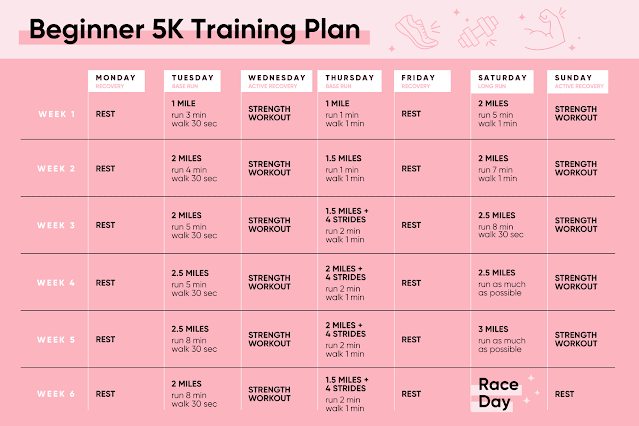Featured Post
- Get link
- X
- Other Apps
10 Mindfulness Techniques to Reduce Stress
10 Mindfulness Techniques to Reduce Stress: Embrace Calm and Clarity in Your Life
In today’s fast-paced world, stress can feel like a constant companion. Whether it's work deadlines, family responsibilities, or the never-ending hustle of daily life, stress can take a toll on both your mind and body. But what if you could find a way to calm the chaos, clear your mind, and regain a sense of peace?
In this article, I’m going to share 10 mindfulness techniques to reduce stress that are easy to practice and incredibly effective. Whether you’re a mindfulness newbie or looking to deepen your practice, these techniques can help you manage stress, stay calm, and build emotional resilience. Let’s dive into these simple but powerful methods to cultivate a more peaceful mind!
1. Deep Breathing (Diaphragmatic Breathing)
Breathing is something we do automatically, but when we’re stressed, our breath becomes shallow and rapid. One of the simplest and most effective ways to reduce stress is to focus on your breath. Try diaphragmatic breathing:
- How to do it: Sit or lie down in a comfortable position. Place one hand on your chest and the other on your abdomen. Take a deep breath in through your nose for a count of four, allowing your abdomen (not your chest) to rise. Hold the breath for four seconds, then exhale slowly through your mouth for a count of four. Repeat for 5-10 minutes.
Why it’s awesome:
- Deep breathing calms your nervous system and reduces cortisol (the stress hormone).
- It’s a quick way to reset your mind and body when stress strikes.
2. Body Scan Meditation
A body scan meditation involves mentally scanning your body from head to toe, noticing any tension, discomfort, or areas where you may be holding stress. By focusing on each part of your body and intentionally relaxing it, you can release physical and emotional tension.
- How to do it: Close your eyes and take a few deep breaths. Start with your toes and slowly move up your body, focusing on each area. Pay attention to any sensations, tension, or discomfort. Breathe into each part, then release the tension as you exhale.
Why it’s awesome:
- Helps increase body awareness.
- Relieves physical tension and promotes relaxation.
3. Mindful Walking
Walking doesn’t have to be a mindless task; it can be a practice in mindfulness! Mindful walking helps you connect with the present moment while moving your body and getting some fresh air.
- How to do it: Find a quiet place to walk, such as a park or nature trail. Focus on the sensation of each step—the way your feet feel as they touch the ground, the rhythm of your stride, and your breath as you move. Stay present and try to avoid getting lost in thoughts.
Why it’s awesome:
- Combines physical movement with mindfulness to clear the mind.
- Promotes relaxation, enhances focus, and boosts mood.
4. Loving-Kindness Meditation (Metta)
Loving-kindness meditation, or Metta, involves sending thoughts of love and well-being to yourself and others. This technique helps reduce negative emotions and promotes compassion, kindness, and emotional well-being.
- How to do it: Sit quietly and take a few deep breaths. Repeat phrases like "May I be happy. May I be healthy. May I be at peace." Then, expand this practice by sending loving-kindness to loved ones, acquaintances, and even strangers.
Why it’s awesome:
- Promotes compassion and emotional healing.
- Reduces negative emotions and boosts feelings of connection.
5. Mindful Eating
We often eat mindlessly—rushing through meals while scrolling on our phones or thinking about our to-do list. Mindful eating encourages us to slow down, savor each bite, and focus on the sensory experience of eating.
- How to do it: Before eating, take a moment to appreciate your food. As you eat, focus on the taste, texture, and smell of each bite. Notice how your body feels as you eat and stop when you’re satisfied, not full.
Why it’s awesome:
- Encourages healthy eating habits and better digestion.
- Helps reduce stress and emotional eating by fostering awareness of food.
6. Guided Meditation
Sometimes it’s hard to meditate on your own, especially when your mind is racing with stress. Guided meditation is a great way to stay focused and calm while a teacher or recording leads you through a meditation practice.
- How to do it: Find a comfortable spot, close your eyes, and listen to a guided meditation. There are plenty of apps and websites offering free or paid guided sessions that can help you reduce stress and practice mindfulness.
Why it’s awesome:
- Provides structure and guidance for beginners.
- A relaxing way to unwind and reset your mind.
7. 5-4-3-2-1 Grounding Exercise
This technique is perfect when you feel overwhelmed and need a quick way to calm down. The 5-4-3-2-1 grounding exercise helps anchor you in the present moment by focusing on your senses.
- How to do it:
- 5: Name five things you can see around you.
- 4: Name four things you can touch.
- 3: Name three things you can hear.
- 2: Name two things you can smell.
- 1: Name one thing you can taste.
Why it’s awesome:
- A quick, effective way to reduce anxiety and ground yourself in the present.
- Helps shift focus away from stressors and into sensory awareness.
8. Journaling for Mindfulness
Writing can be a therapeutic way to process emotions and clear your mind. Mindful journaling allows you to focus on your thoughts, emotions, and experiences without judgment.
- How to do it: Take a few minutes each day to write down your thoughts, feelings, or experiences. You can focus on what you're grateful for, how you're feeling, or anything that comes to mind. The key is to stay present and honest with yourself.
Why it’s awesome:
- Helps you process emotions and release stress.
- Cultivates self-awareness and emotional clarity.
9. Progressive Muscle Relaxation (PMR)
Progressive Muscle Relaxation (PMR) involves tensing and relaxing different muscle groups to reduce stress and promote physical relaxation. This technique can be especially helpful for those who hold stress in their bodies.
- How to do it: Start by tensing the muscles in your feet for a few seconds, then releasing the tension. Gradually work your way up through your body, focusing on each muscle group (calves, thighs, abdomen, etc.) until you reach your head.
Why it’s awesome:
- Reduces muscle tension caused by stress.
- Promotes full-body relaxation and stress relief.
10. Visualization
Visualization involves imagining a peaceful, calming scene to help relax your mind and reduce stress. This can be a beach, forest, or any place that makes you feel at ease.
- How to do it: Sit quietly, close your eyes, and take a few deep breaths. Imagine yourself in a peaceful place—feel the environment around you, whether it’s the warmth of the sun, the sound of the waves, or the scent of fresh air. Stay in the scene for several minutes, focusing on all the calming details.
Why it’s awesome:
- Provides a mental escape from stress and anxiety.
- Evokes feelings of relaxation and tranquility.
Final Thoughts
Mindfulness is more than just a practice; it’s a way of life that can transform the way you respond to stress. Whether you’re breathing deeply, meditating, or visualizing a peaceful scene, these 10 mindfulness techniques to reduce stress are simple, effective tools that can help you stay calm, present, and centered, no matter what life throws your way.
Remember, mindfulness isn’t about being perfect—it’s about showing up for yourself and taking a moment to breathe, relax, and let go of stress. So, try out these techniques, and see how they help you cultivate more calm and clarity in your life. You’ve got this! 🌿🧘♂️🌟
Popular Posts
How to Meal Prep for an Entire Week (With Recipes)
- Get link
- X
- Other Apps



Comments
Post a Comment